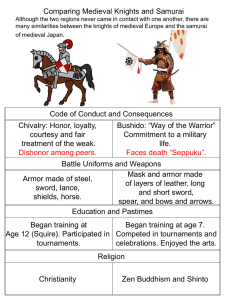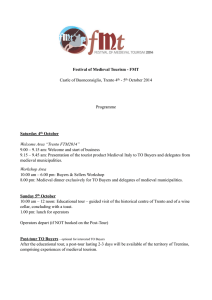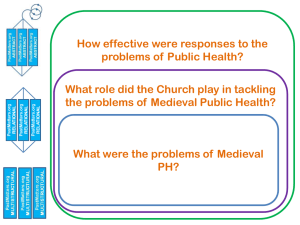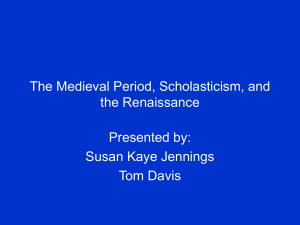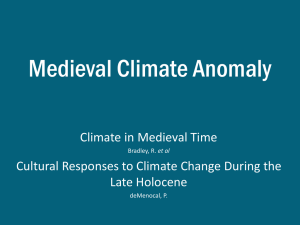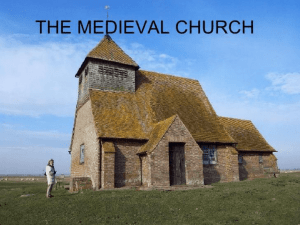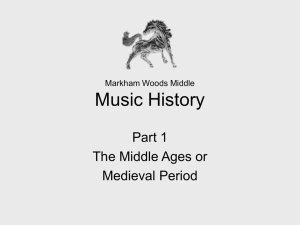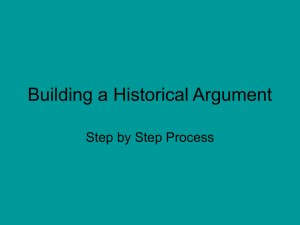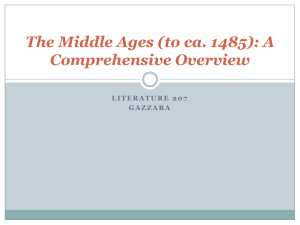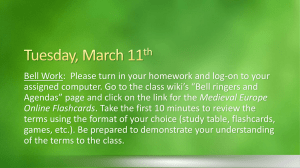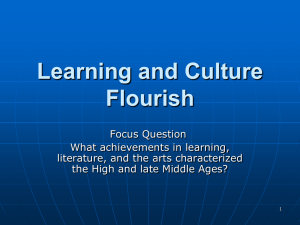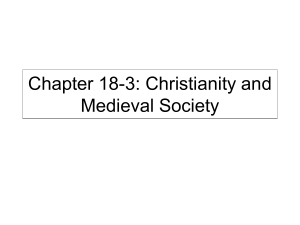The Medieval Church - Wharton High School
advertisement
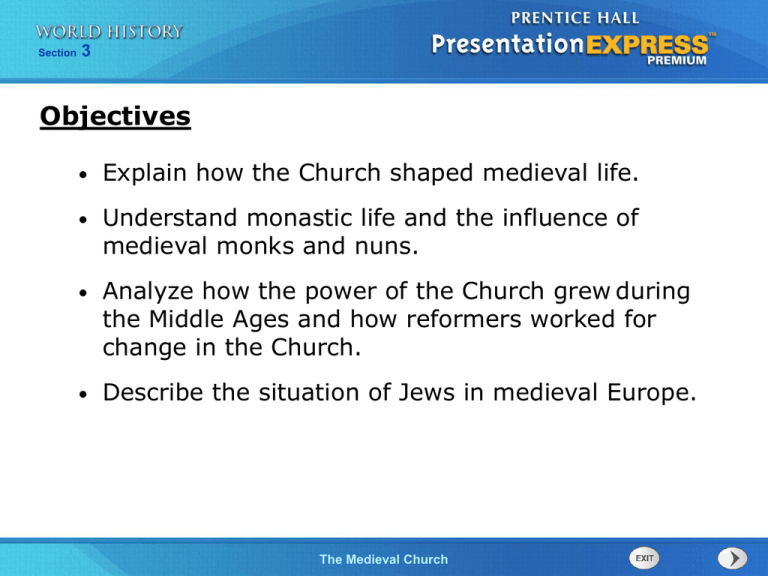
Section 3 Objectives • Explain how the Church shaped medieval life. • Understand monastic life and the influence of medieval monks and nuns. • Analyze how the power of the Church grew during the Middle Ages and how reformers worked for change in the Church. • Describe the situation of Jews in medieval Europe. The Medieval Church Section 3 Terms and People • sacrament – a sacred right of the Church • Benedictine Rule – regulations for monastic life created by a monk named Benedict and used by monasteries and convents across Europe • secular – nonreligious; having to do with the worldly, rather than the religious • papal supremacy – authority of the pope over all secular rulers, including kings and emperors • canon law – the body of laws developed by the Church The Medieval Church Section 3 Terms and People (continued) • excommunication – the penalty of throwing someone out of the Church and forbidding them from receiving sacraments or a Christian burial • interdict – an order excluding an entire town, region, or kingdom from receiving most sacraments and Christian burial • friar – a monk who, rather than living in a monastery, traveled and preached to the poor • St. Francis of Assisi – a wealthy Italian who gave up his comfortable life and founded the first order of friars The Medieval Church Section 3 How did the church play a vital role in medieval life? The Christian Church and its teaching were central to medieval life. The Church became the most powerful force in Europe. Religion shaped everyday life and exerted great economic and political influence. The Medieval Church Section 3 By the late Middle Ages, Western Europe was a Christian civilization. • Everyday life was shaped by Church rituals. • The parish priest administered sacraments and explained the Bible. The Medieval Church Section 3 People went on pilgrimages to visit holy places, often in spring. In The Canterbury Tales, Geoffrey Chaucer portrays members of all three classes of society as they travel on a pilgrimage to Canterbury. The Medieval Church Section 3 Once Christianity had spread throughout Europe, anyone who was not a member of the Church was viewed with suspicion. The Medieval Church Section 3 Daily life in the village revolved around the Church. The church was the largest public building in the village. By the 1100s, communities had built large cathedrals to glorify God. The Medieval Church Section 3 Church attitudes toward women were two-sided. Women were viewed as weak and easily led to sin. However, Mary was seen as the pure mother of God and prayed to as an ideal. The Church often punished women more harshly than men for similar misdeeds. The Church also protected women and fined men who injured their wives. The Medieval Church Section 3 Some men and women lived their lives in monasteries as monks or nuns. • Benedictine Rule was a set of rules to regulate monastic life. • It spread to monasteries across Europe. • Monks and nuns took vows of obedience, poverty, and chastity. • They worked in the field or workshop, prayed and studied. • Monasteries served as basic schools, inns, and libraries. They kept learning alive. The Medieval Church Section 3 Women could not become priests, but they could enter convents. • There, they could compose music and write. Abbess Hildegard of Bingen wrote plays. • During the later Middle Ages, the Church withdrew rights from nuns. The Medieval Church Section 3 Medieval popes claimed papal supremacy, and the Church had absolute power in religious matters. The Church developed its own rules, known as canon law. Those who disobeyed faced penalties such as excommunication or the interdict. The Church was also a force for peace. It used its authority to end fighting among nobles. Warfare declined during the 1100s. The Medieval Church Section 3 The success of the Church caused problems and corruption. There were several movements for reform. New preaching orders of friars developed. The first was founded by St. Francis of Assisi. He gave up a comfortable life when he heard a voice speak to him during prayer. The Medieval Church Section 3 Jewish communities existed all across Europe at this time. • Since Muslim rulers were tolerant of Jews and Christians, Spain became a center of Jewish culture. • Prejudice against Jews increased by the late 1000s and thousands migrated to eastern Europe. The Medieval Church


